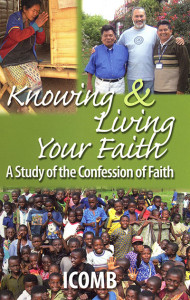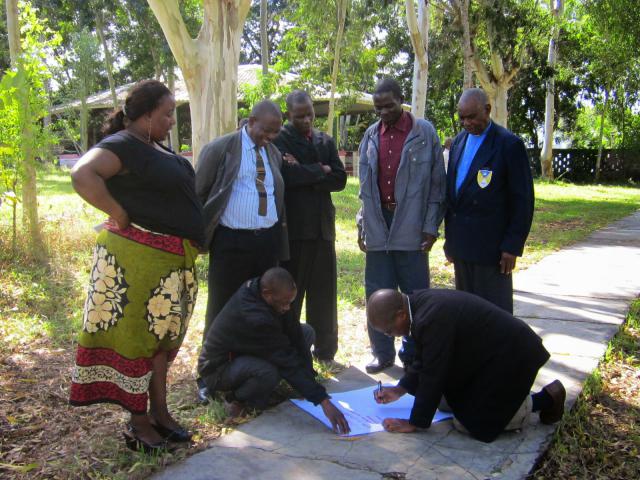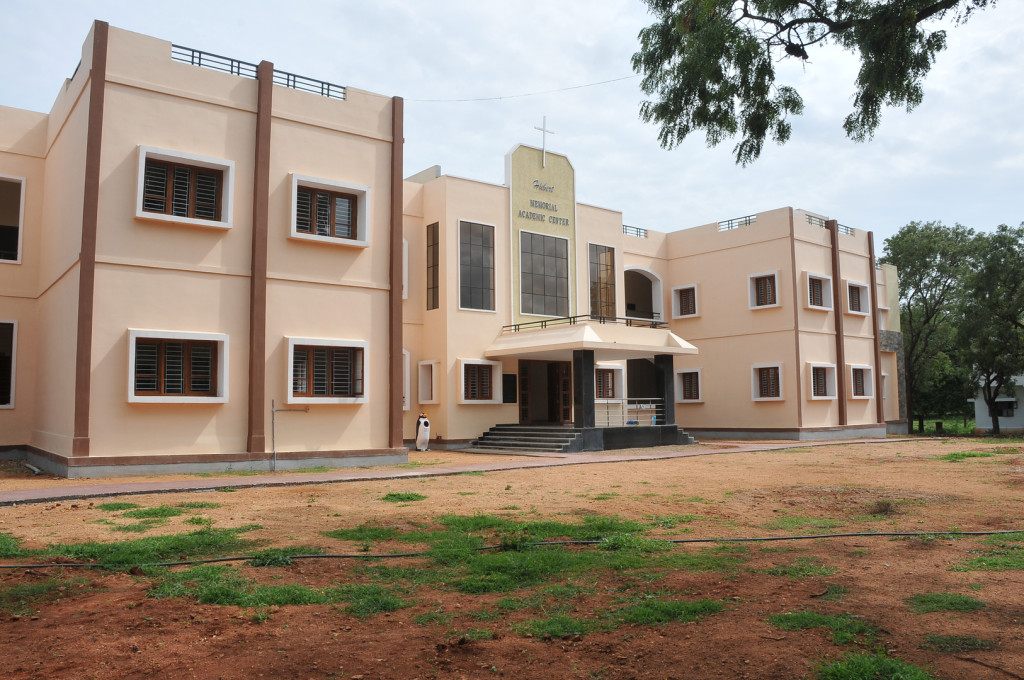Recently at their annual gathering, CIM, the Council for International Anabaptist Ministries explored “Multicultural mission collaboration: building capacity with churches to carry out their own ministries/mission/outreach.” One of the workshops focused on global models of training church workers. This workshop was led by James Krabill (Mennonite Mission Network), Rod Hollinger-Janzen (Africa Inter-Mennonite Mission), and myself of Mennonite Brethren Mission. Before reviewing current models that might be helpful in other contexts, I presented a brief historical sketch of what has been, and some ongoing challenges in mission capacity building for the future. The following blog post is based on that presentation.
-
Informal Efforts
This has undoubtedly been the most common kind of training given by all of our agency workers (missionaries and volunteers) …and probably the least recognized. It is quite simply life-on-life discipleship and training. It usually emerges out of mission worker relationships with less mature believers, and in the context of local church life and ministry. It is the Naomi-Ruth and Paul-Timothy relationship.
How frequently leaders in our partner churches refer with affection to mission workers as their fathers or mothers in the faith. The talked and walked together. They laughed and cried together. Some workers began orphanages or literally adopted children as their own. The majority of others could say with Paul, “…as a nursing mother cares for her children, so we cared for you … we dealt with each of you as a father deals with his own children, encouraging, comforting and urging you to live lives worthy of God …” (I Thess. 2:7-12).
-
Non-formal Efforts
Since earliest North American agency efforts in India (1899), China (1901), and Congo (1912), it was common for missionaries to take on young national leaders as apprentices, and intentionally train them in Bible knowledge, Christian character, and ministry skills.
Henry J. and Maria Brown, pioneers of the General Conference Mennonite Church mission in China, were exemplary in the non-formal training of nationals. Evangelistic work was carried on from the beginning with Chinese evangelists assisting in outstations, traveling work, instruction classes, and as colporteurs and Bible women.
Increasingly in recent years, mission workers offer workshops and seminars, or facilitate participation in other kinds of short courses. An excellent example of this is the extensive network of peace education seminars, workshops, and materials that Mennonite Central Committee has created.
-
Formal Efforts
As is often the case today, the default delivery system of theological education in the mission fields was the formal Bible School/Institute. The missionaries reproduced that which they had experienced and were familiar with in their sending context. So, as the Bible School movement gained momentum in the early decades of the 20th century in the USA and Canada, this same pattern was pursued on the mission field. A few examples will suffice from contexts outside of North America.
- China: The inter-Mennonite China Mennonite Mission Society pioneered mission work in 1912. Early reports indicate a Bible School for training workers was among their first initiatives.
- Belgian Congo: The Africa Inter-Mennonite Mission began a Bible School at Charlesville in 1917, five short years after entering the field. This school has survived many turbulences and today thrives as the Kalonda Bible Institute.
- India: Russian Mennonite Brethren first cooperated with American Baptists here in 1889. Ten years later the American Mennonite Brethren Mission Union began their own work. By 1920 Bethany Bible School was established, which today has become the fully accredited MB Centenary Bible College in Shamshabad.
- Argentina: Missionaries of the Mennonite Board of Missions and Charities began a Bible Institute for the emerging Mennonite conference in 1926. For decades it was located at Bragado and known by that name. In 1955 it was relocated to Montevideo, Uruguay, and after 1974 assumed by the Centro Evangélica Menonita de Teologia, Asunción (CEMTA), serving Mennonite churches in Argentina, Brazil, Paraguay and Uruguay.
- Europe: In 1950 European Mennonites from France, Germany and Switzerland, assisted by Mennonite Central Committee, established the European Mennonite Bible School in Basel, Switzerland. The German-French school continues today at nearby Bienenberg.
-
Newer Developments (since 1960s)
Theological Education by Extension (TEE). The vision of the TEE model is to encourage and enable local leaders to develop their gifts and ministries without leaving their homes, jobs, communities, and local congregations. It began in the 1960s, peaked in the 1980s,although it is still used today in a variety of forms under the broad umbrella of “distance learning.” In 1986, there were at least 27 different Mennonite-related TEE programs in 20 different countries of Africa, Latin America, and the Caribbean. An older example was the MB program in Kikwit, DR Congo. A 1987 report indicated 94 local centers with 1082 students utilizing 17 auto-didactic texts. A newer example is that of Seminario Ministerial de Liderazgo Anabautista (SEMILLA). This inter-Mennonite distance learning program is based in Guatemala City, yet serves eight Central America countries and even more Anabaptist conferences. Instructors take learning to students via modules, from secondary to undergraduate levels. Brethren in Christ missiologists Fred and Grace Holland exercised vast influence among evangelical workers throughout Africa as they began numerous TEE programs and assisted in producing over 43 TEE texts.
Scholarships. Beginning in the 1960s, North American agencies furnished study leaves and scholarships for selected leaders to engage in advanced studies (Bachelor, Master, Doctoral levels), usually in North America at Anabaptist schools in Goshen/Elkhart (IN), Harrisburg (PA), Harrisonburg (VA), Fresno (CA), and Winnipeg (MB).
Study Centers. Especially Mennonite Mission Network (and its forerunners) have utilized study centers and their consequent learning networks as a means of discipleship, training, theological reflection and publications. With the growth of the internet, their influence has multiplied all the more. Examples are the London Mennonite Centre and the resulting Anabaptist Network in the UK; the (South) Korea Anabaptist Centre; and the Paris Mennonite Center in France.
 Publications. With increasing clarity and articulation of both Anabaptist theology and missiology, mission agencies have committed more and more resources to translating materials into local languages for teaching/training, and financing local writers to produce contextual materials for their countries and regions. One example is the confession of faith study guide of the International Community of Mennonite Brethren (ICOMB), produced and distributed with assistance from MB Mission. This study guide has been translated into at least ten languages and is a theological handbook for workers in over 20 conferences.
Publications. With increasing clarity and articulation of both Anabaptist theology and missiology, mission agencies have committed more and more resources to translating materials into local languages for teaching/training, and financing local writers to produce contextual materials for their countries and regions. One example is the confession of faith study guide of the International Community of Mennonite Brethren (ICOMB), produced and distributed with assistance from MB Mission. This study guide has been translated into at least ten languages and is a theological handbook for workers in over 20 conferences.
Liberal Arts Universities. Some well-known universities in evangelical and Anabaptist circles had their beginnings and early development via mission agencies and the holistic training vision of mission workers. Examples of these are LCC University (Lithuania), Universite Chretienne de Kinshasa (DR Congo), Meserete Kristos College (Ethiopia), Faculdade Fidelis (Brazil).
-
Trends
As one reviews developments in more recent decades, a few trends appear to be emerging. One, inter-Mennonite, inter-evangelical, and/or international partnerships in formal theological education in global circles are becoming more common. Recent examples of this are SEMILLA of Central America, LCC University of Eastern Europe, and the Francophone Network linking three continents (Africa, Europe, North America).
Two, there is a decreasing investment on the part of North American mission agencies toward formal training, and a growing investment in a variety of non-formal means. One can compare the number of workers engaged in resourcing and capacity-building, versus those serving as professors in educational institutions.
Three, there appears to be an increasing amount of training (not necessarily formal) focused on preparing cross-cultural mission workers from within countries of the Global South. Some better known examples are the Center Universitaire de Missiologie (Kinshasa, DR Congo), the International Missionary Association (of conferences linked with Eastern Mennonite Missions), and the Centro Mateo de Entrenamiento (Guadalajara, Mexico; serving Latino mission workers; linked with MB Mission).
-
Challenges
A number of ongoing challenges for North American mission agencies and their international partners remain, among these:
- Focus: Whether to invest resources in training local church workers (evangelists, pastors, teachers) or other kinds of leaders who will serve in roles beyond the local church (trainers, professionals, missiologists)?
- Content: Whether to create from limited resources Anabaptist owned and operated programs, or utilize already existing, and often reputable Evangelical/Protestant programs?
- “Brain drain:” How to avoid the displacement and eventual removal of gifted and trained educators from rural to urban settings, and from poorer to richer regions of the world?
- Selection: Do the right leaders get the right kind of training at the right location?
This brief survey confirms a high degree of interest and investment on the part of North American agencies in the preparation of a diversity of church workers. Such engagement is one indicator of an Anabaptist understanding of mission where church, agency and school serve in aligned cooperation for the extension of God’s Kingdom. It also indicates a biblical commitment to not merely extend the gospel’s reach, but to consolidate the results so that there will be much fruit that remains.
Victor Wiens served as a missionary with MB Mission in São Paulo, Brazil for 25 years. He now serves in a more global role as Mission Capacity Building coach, focusing on missional leadership development throughout Latin America and Africa.




Comments on this Blog entry
Stay in touch with the conversation, subscribe to the RSS feed for comments on this post.